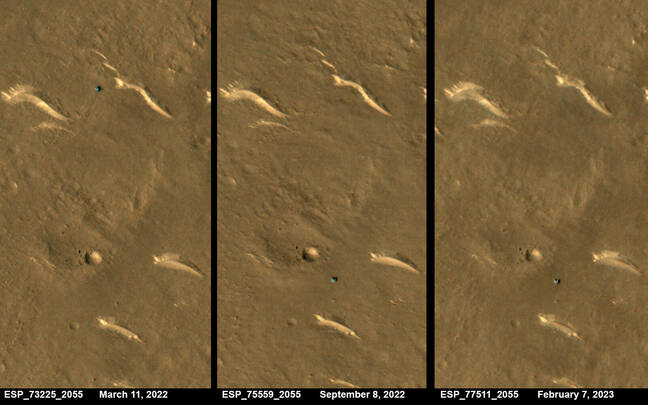This article is more than 1 year old
China's Zhurong rover may be dead: NASA images show no sign of life
Or maybe it's just resting and pining for the fjords
Pic China National Space Administration's Zhurong rover remains uncertain as the latest images captured by NASA's Mars Reconnaissance Orbiter released on Tuesday show the vehicle hasn't moved in months.
Under China's first interplanetary mission, Tianwen-1, Zhurong was launched in July 2020 and landed on Mars in May 2021. Zhurong marked the country's first-ever Martian rover, and made China the third country to successfully pull off a soft landing on the Red Planet after the US and the Soviet Union.
The six-wheeled trundlebot was designed to study Martian geology by mapping local terrain and analysing its chemical and structural compositions, paying close attention to signs of water, ice, and mineral content that might support manned missions. Data from the rover has helped scientists spot signs that liquid water may have existed on Mars for longer than initially thought.
CNSA's Tianwen-1 mission has been a remarkable achievement, but Zhurong's mission plan is currently uncertain. Photographs snapped by the HiRISE camera onboard NASA's Mars Reconnaissance Orbiter revealed the rover is near a crater and hasn't budged since September 2022:
Officials have not released any new images from Zhurong and have remained silent on its state, prompting space fans to wonder whether the rover may have succumbed to Martian dust. Zhurong entered hibernation in May 2022 to conserve power and winter conditions. The Chinese Academy of Science previously said it would automatically awaken when it had converted enough energy from its solar panels to carry on operations.
- Research raises questions: Are instruments taken to Mars sensitive enough to find life?
- Curiosity finds clearest evidence yet for water on Mars
- Water-hunting NASA cubesat won't reach Moon after total thruster fail
- Language, schmanguage: NASA's generative AI builds spaceships
Zhurong was expected to stir from its slumber in late December, but the latest images show it's still dormant, unfortunately. Mars has a harsh arid climate, where dust is frequently kicked up into storms by strong winds and temperatures fluctuate from minus 3 degrees Celsius (26 degrees Fahrenheit) during the day to -96 degrees Celsius (-140 degrees Fahrenheit) at night.
It's possible that the rover is having difficulties generating enough energy to turn itself back on due to its solar panels being covered with dust. The dust prevents them from converting sunlight into power efficiently, making it increasingly tricky to conserve enough energy. Last year in December, NASA was forced to end one of its Martian missions after its InSight lander's batteries drained and its solar panels were blanketed in too much dust to revive it.
"Weather on Mars is not rain and snow; weather on Mars is dust and wind," Bruce Bandert, principle InSight investigator at NASA's Jet Propulsion Laboratory previously said. ®

